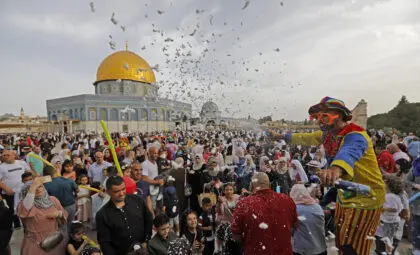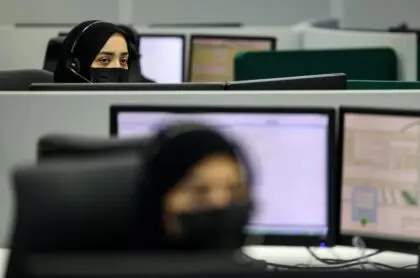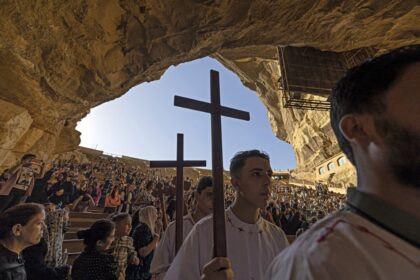
Introduction
Morocco (official name: Kingdom of Morocco) is a mountainous country located in northwest Africa across the Strait of Gibraltar.
Morocco borders Algeria to the east and southeast, Western Sahara to the south, the Atlantic Ocean to the west and the Mediterranean Sea to the north. Morocco is the only African country with coastal exposure to both the Atlantic Ocean and the Mediterranean Sea, and it covers an area of 446,550 km2.
Rabat is the capital city, located on the Atlantic coast at the mouth of the Bouregreg Valley, opposite the city of Sale. The history of Rabat is closely linked to the history of the Roman settlement of Sala (Sheila).
Morocco is one of the countries that have been subject to extensive migration and has long been the location of urban communities that were originally settled by people from outside the region.
This region was previously controlled by Carthage, but later became the westernmost province of the Roman Empire.
Following the Arab conquest in the late 7th Century, the broader area of North Africa came to be known as Morocco and the majority of the people became Muslims.
Moroccan kingdoms enjoyed political influence that extended beyond the coastal regions. In the 11th Century, the first native Amazigh dynasty of North Africa, the Almoravids, gained control of an empire stretching from Andalusian (southern) Spain to parts of Sub-Saharan Africa.

Attempts by Europeans to establish permanent footholds in Morocco beginning in the late 15th Century were largely repulsed. Nevertheless, the country later became a subject of Great Power politics in the 19th Century.
Morocco was made a French protectorate in 1912 but regained independence in 1956. Today it is the only monarchy in North Africa.
Although the country is following a policy of rapid modernization and enjoys a rising standard of living, it retains much of its ancient architecture and even more of its traditional customs.
Morocco’s largest city, and major Atlantic Ocean port Casablanca, is an industrial and commercial center.
According to estimates for 2021, the population stands at 37.37 million. Arabs and Amazigh make up 99 percent of the total population.
Arabic and Amazigh (or Berber) are the official languages of the country. French is the language of business, government, and diplomacy.
Muslims make up 99 percent of the total population of the Kingdom (almost all of whom are Sunni and less than 0.1 percent are Shia). Other ethnic groups (Christians, Jews and Baha’is) account for only 1 percent of the total population.
The local currency is Dirham, and natural resources include phosphate, iron ore, manganese, lead, zinc, fish, and salt.
In military terms, Morocco ranked 61st out of 145 on the countries listed in the 2023 Global Firepower Index.
Media pluralism in morocco is regarded as a facade covering up the lack of media freedom and diverse representation of opinions in the state. As detailed by the Reporters Without Borders organization, independant journalists and critical media outlets face great pressure as their right to information is violated.
Morocco ranks 135th out of 180 countries listed in the Reporters Without Borders (RSF) World Press Freedom Index for 2022. The RSF noted that media freedom in the country is “deteriorating slowly but steadily.”
Television in Morocco is the most popular source of information and entertainment. Arab stations are popular in Morocco, as in the rest of North Africa. According to a study conducted by the Ipsos Group in 2011 in collaboration with the Arab Media Forum, MBC2, MBC4, and Al Jazeera channels are among the five most popular channels in Morocco. However, the 2M TV (the second national television) remains by far the most popular.
Newspapers in Morocco struggle to win a wide range of readers due to the high illiteracy rates in the country. Like other journalistic environments in North Africa, Arabic publications have the widest circulation rates, while French-language newspapers are more prestigious.
Some of the prominent faces in Morocco include Nabila Mounib, the first Moroccan woman to lead a political party; Nasser Zefzafi, the influential leader of Moroccan protests; and Leila Slimani, the new powerful voice in French literature.
Football is the most popular sport. Morocco qualified for the FIFA World Cup five times, the latest of which was in the 2018 World Cup in Russia, after 20 years of absence.
The Moroccan people have their special way of showing love for sports. They are excellent at different types of sports such as equestrian sport, swimming, and athletics. Hicham El Guerrouj won two gold medals at the 2004 Summer Olympic Games in Athens.
Morocco’s climate is typically Mediterranean. Winter is humid and mild while summer is hot and dry. The rainy season generally extends from October to April. Heavy rains sometimes lead to devastating floods. However, overall several factors act to reduce rainfall in the country.
Most of Morocco is located at high altitudes, with an average of about 2600 feet (800 meters) above sea level.
It has two mountain ranges that are divided eastward from the Atlantic Maghreb: the Rif Mountains in the north form a buffer zone along the Mediterranean coast, while the High Atlas creates a barrier across the center. The two parts of Morocco are connected through the narrow Taza Gap in the northeast, as well as the roads that follow the ancient traditional routes.
The most prominent touristic attractions include the Jemaa el-Fnaa Square, Marrakech’s most popular landmark and a favorite destination for many tourists. The list also includes Ait Ben Hedou, a village in the fortified town of Ouarzazate, located on the old convoy road between the Sahara Desert and Marrakech; and the Draa River south of the High Atlas.
Morocco uses the right-hand-traffic rule of the road as in the rest of the Middle East and North African countries.
The Standard Time in Morocco is (GMT+1), and the international calling code is +212.





















